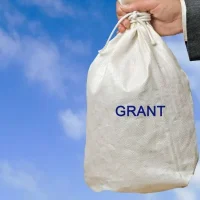In the ever-evolving landscape of agriculture, securing financial support is crucial for farmers and agribusinesses aiming to innovate, expand, or sustain their operations. Grants serve as a vital resource, providing funds that do not require repayment, thus allowing farmers to invest in new technologies, improve infrastructure, or adopt sustainable practices. The agricultural sector is diverse, encompassing everything from small family farms to large-scale agribusinesses, and the availability of grants reflects this variety.
Understanding the different types of grants available can empower farmers to make informed decisions that align with their goals and needs. Navigating the world of grants can be daunting, especially for those new to the process. However, with a clear understanding of the various funding sources and their specific requirements, farmers can enhance their chances of securing financial assistance.
This article will explore the different categories of grants available to farmers and agribusinesses, including government grants, private foundation grants, and specialized funding opportunities. By breaking down these options, we aim to provide actionable insights that can help agricultural professionals identify and apply for the right grants to support their endeavors.
Government Grants for Agriculture
Government grants are often the most significant source of funding for farmers and agribusinesses. These grants are typically administered at the federal, state, or local levels and are designed to support various agricultural initiatives. The U.S. Department of Agriculture (USDA) plays a pivotal role in this arena, offering numerous grant programs aimed at enhancing agricultural productivity, sustainability, and rural development. For instance, the USDA’s Rural Development program provides grants that assist in improving infrastructure in rural areas, which can be crucial for farmers looking to expand their operations. One notable example is the Specialty Crop Block Grant Program, which allocates funds specifically for projects that enhance the competitiveness of specialty crops. This program not only supports farmers but also encourages collaboration among stakeholders in the agricultural supply chain. By tapping into government grants, farmers can access resources that help them innovate and grow while contributing to the overall health of the agricultural sector. It is essential for farmers to stay informed about application deadlines and eligibility criteria to maximize their chances of receiving funding.
Private Foundation Grants for Agriculture
In addition to government funding, private foundations also play a significant role in supporting agricultural initiatives through grants. These foundations often focus on specific areas within agriculture, such as sustainable farming practices, food security, or community development. Organizations like the Walton Family Foundation and the Bill & Melinda Gates Foundation have established grant programs aimed at improving agricultural practices and increasing access to nutritious food in underserved communities.
For example, the Foundation for Food and Agriculture Research (FFAR) offers grants that promote innovative research in agriculture. Their funding supports projects that address critical challenges facing the agricultural sector, such as climate change and food safety. By seeking out private foundation grants, farmers can access additional resources that complement government funding and help them achieve their goals.
It is important for applicants to align their projects with the foundation’s mission and demonstrate how their work contributes to broader societal benefits.
Sustainable Agriculture Grants
As the demand for environmentally friendly practices grows, sustainable agriculture grants have become increasingly popular among farmers looking to implement eco-friendly methods. These grants are designed to support projects that promote sustainable farming practices, such as organic farming, soil conservation, and water management. Organizations like the Sustainable Agriculture Research and Education (SARE) program provide funding for research and education projects that advance sustainable agriculture.
A compelling example of a successful sustainable agriculture grant project is the implementation of cover cropping systems by a group of farmers in the Midwest. By utilizing cover crops, these farmers improved soil health, reduced erosion, and enhanced biodiversity on their farms. The funding they received allowed them to experiment with different cover crop varieties and share their findings with other local farmers.
This collaborative approach not only benefited individual farms but also contributed to a more resilient agricultural community.
Specialty Crop Grants
Specialty crop grants are tailored specifically for farmers who grow fruits, vegetables, nuts, and other non-traditional crops. These grants aim to enhance the competitiveness of specialty crops in the marketplace while promoting research and education related to these products. The USDA’s Specialty Crop Program is a prime example of a funding source dedicated to supporting specialty crop producers.
Farmers who cultivate unique or high-value crops can benefit significantly from these grants. For instance, a small farm specializing in heirloom tomatoes received a specialty crop grant to develop a marketing campaign that highlighted their unique varieties. The funding allowed them to participate in local farmers’ markets and engage with consumers directly.
As a result, they not only increased their sales but also educated the community about the importance of supporting local agriculture.
Beginning Farmer and Rancher Grants
Recognizing the challenges faced by new entrants in agriculture, various grant programs specifically target beginning farmers and ranchers. These grants aim to provide financial assistance and resources to help newcomers establish their operations successfully. The USDA’s Beginning Farmer and Rancher Development Program (BFRDP) is one such initiative that offers funding for training programs, mentorship opportunities, and other resources tailored to new farmers.
A real-world example of this program’s impact can be seen in a cooperative established by a group of young farmers in a rural area. With BFRDP funding, they were able to create a mentorship program that paired experienced farmers with beginners. This initiative not only provided valuable knowledge transfer but also fostered a sense of community among local agriculturalists.
By focusing on supporting beginning farmers through targeted grants, these programs help ensure the future sustainability of agriculture.
Value-Added Producer Grants
Value-added producer grants are designed to assist farmers in creating new products or enhancing existing ones to increase profitability. These grants support projects that add value to raw agricultural products through processing, marketing, or distribution efforts. The USDA’s Value-Added Producer Grant (VAPG) program is an excellent resource for farmers looking to diversify their income streams.
For instance, a dairy farmer who received a value-added grant used the funds to develop a line of artisanal cheese products from their milk. This venture not only provided an additional revenue source but also allowed them to connect with consumers seeking locally produced goods. By transforming raw milk into value-added products, they were able to tap into niche markets and enhance their farm’s overall viability.
Conclusion and Tips for Applying for Agriculture Grants
In conclusion, grants represent a vital lifeline for farmers and agribusinesses seeking financial support for various initiatives. From government programs to private foundation funding and specialized grants for sustainable practices or value-added products, there are numerous opportunities available for those willing to invest time in researching and applying for them. However, navigating this landscape requires careful planning and preparation.
To increase your chances of success when applying for agriculture grants, consider these actionable tips: First, thoroughly research available grant programs to identify those that align with your goals and needs. Pay close attention to eligibility criteria and application deadlines. Second, develop a clear project proposal that outlines your objectives, methods, and expected outcomes.
Be sure to include data or case studies that demonstrate the potential impact of your project. Third, seek feedback from peers or mentors before submitting your application; fresh perspectives can help refine your proposal. Lastly, maintain persistence throughout the process; grant applications can be competitive, and rejection is not uncommon.
Use any feedback received from unsuccessful applications as an opportunity for growth and improvement in future submissions. By following these strategies and leveraging available resources effectively, farmers can secure the funding necessary to thrive in an increasingly competitive agricultural landscape.








































